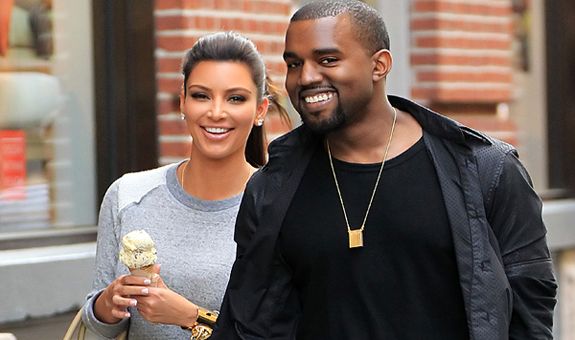Relationships
Mixed Ethnicity Relationships: The Way of the Future?
Why are we so attracted to people from a different race?
Posted January 5, 2015

Kanye West and Kim Kardashian
Recent events have resulted in tense race relations in the United States at present. In view of this, we have decided to focus on positive relationships that can occur between individuals of different ethnicities, and some of the benefits of these relationships.
We tend to form relationships with individuals similar in ethnic background, political and religious beliefs, social and economic status, intelligence, attractiveness and personality characteristics.
In Western society, as communities become more diverse, mixed ethnicity or interracial relationships are increasing in prevalence. In the United States, one in ten married couples are interracial, an increase of 28% over ten years. This trend is reflected in Europe and Australia.
A recent Pew survey found nine in ten Americans viewed mixed ethnicity marriage as neutral or a change for the better in society. Younger age and higher levels of education were associated with favorable views of mixed relationships.
Despite these figures, there remains significant public opposition and stigma associated with mixed ethnicity relationships. Only last year, a Cheerios ad in the United States showing an interracial family sparked a vocal racist backlash. This stigma is reflected in individual relationships. Evidence suggests that adolescents who are dating interracially are less likely to tell their family and friends about their relationships than those dating a same-race partner, and are less likely to be publicly affectionate. (1)
Studies suggest that interracial interactions are associated with higher levels of stress and anxiety than same-race interactions. (2) However, such stress can be reduced by communication between individuals of different ethnicity that focuses on their similarities. (3) This is especially the case for individuals who view racial bias (implicit beliefs we have about our own and other races) as malleable and able to change over time. (4)

Jessica Alba has Danish-French Canadian and Hispanic heritage
In the United States Pew study, gender patterns of interracial marriage were found to vary widely. In 2010, 24% of all black male newlyweds married outside their race, compared with just 9% of black female newlyweds. The opposite trend was seen among Asians, with 36% of females marrying outside of their race compared to 17% of males.
There have been a number of theories put forward to explain this phenomenon, based on social status, racial and gender stereotypes, and height differences. (5,6) One compelling explanation for this gender asymmetry relates to facial attractiveness, with white women rating black male faces as the most attractive, and white men rating Asian female faces as most attractive. (7) Previous research has demonstrated a link between genetic diversity and facial attractiveness, with women rating men with greater diversity in a set of genes critical to immune system function to be more attractive. (8)
On the topic of physical attraction, a number of studies have shown that children of mixed ancestry are perceived to be more attractive than those who are born of same-race relationships. (9) Evolutionary psychologists suggest that this increased attractiveness relates to greater genetic fitness in these individuals. It is known that greater genetic variation is associated with reduced incidence of certain diseases – cystic fibrosis, Tay-Sachs disease and hemophilia – all which can occur when an individual inherits two copies of the relevant defective gene. Greater genetic variation may also be associated with a greater ability to ward off infection and greater resilience to stress.
Racial discrimination is reduced among children of interracial relationships, and adults who have been in interracial relationships are less prejudiced. (10) Those who oppose interracial relationships are fighting a rearguard action, as this trend is set to increase as the world becomes increasingly globalized. Based on the evidence available, this is probably a good thing.
References:
1. Herman MR, Campbell ME. I wouldn't, but you can: Attitudes toward interracial relationships. Social science research. 2012;41(2):343-58.
2. Trawalter S, Richeson JA, Shelton JN. Predicting behavior during interracial interactions: a stress and coping approach. Personality and social psychology review : an official journal of the Society for Personality and Social Psychology, Inc. 2009;13(4):243-68.
3. West TV, Magee JC, Gordon SH, Gullett L. A little similarity goes a long way: the effects of peripheral but self-revealing similarities on improving and sustaining interracial relationships. Journal of personality and social psychology. 2014;107(1):81-100.
4. Neel R, Shapiro JR. Is racial bias malleable? Whites' lay theories of racial bias predict divergent strategies for interracial interactions. Journal of personality and social psychology. 2012;103(1):101-20.
5. Feliciano C, Robnett B, Komaie G. Gendered racial exclusion among white internet daters. Social science research. 2009;38(1):41-56.
6. Galinsky AD, Hall EV, Cuddy AJ. Gendered races: implications for interracial marriage, leadership selection, and athletic participation. Psychological science. 2013;24(4):498-506.
7. Lewis MB. A facial attractiveness account of gender asymmetries in interracial marriage. PloS one. 2012;7(2):e31703.
8. Roberts SC, Little AC, Gosling LM, Perrett DI, Carter V, Jones BC, et al. MHC-heterozygosity and human facial attractiveness. Evolution and Human Behavior. 2005;26(3):213-26.
9. Lewis MB. Why are mixed-race people perceived as more attractive? Perception. 2010;39(1):136-8.
10. Hauser, M. It seems biology (not religion) equals morality. Edge. 2009.




